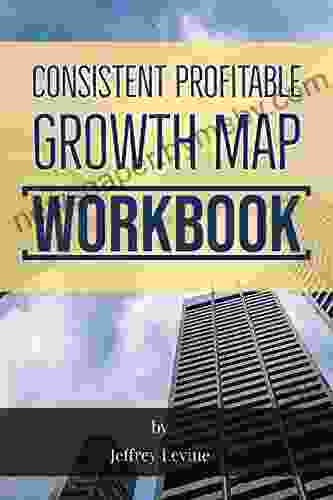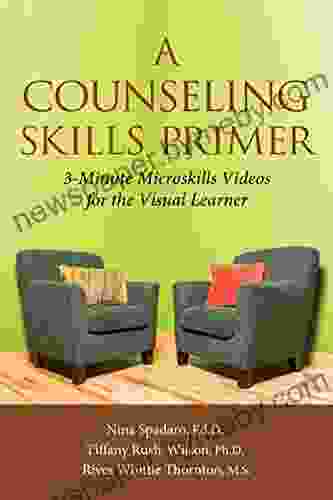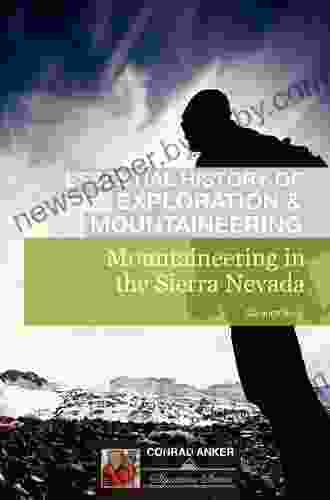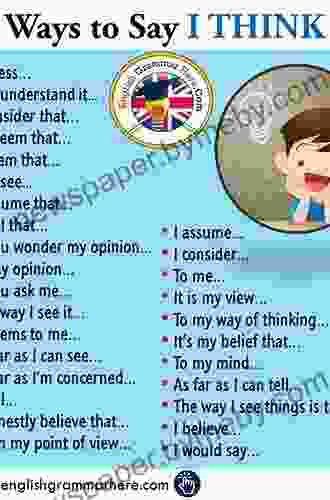Unveiling the Secrets of Effective Communication: A Comprehensive Guide to "What Do You Say and Why?"

4.6 out of 5
| Language | : | English |
| File size | : | 3030 KB |
| Text-to-Speech | : | Enabled |
| Screen Reader | : | Supported |
| Enhanced typesetting | : | Enabled |
| Word Wise | : | Enabled |
| Print length | : | 355 pages |
Communication is the lifeblood of human interaction. It allows us to share ideas, build relationships, and shape our world. Effective communication is an art that can be mastered with knowledge, practice, and a deep understanding of the underlying principles.
In his groundbreaking book, "What Do You Say and Why?", communication expert Dr. Robert Bolton unveils the secrets behind effective communication. This comprehensive guide provides a roadmap for navigating the complexities of verbal and non-verbal language, empowering you to convey your message with clarity, impact, and style.
Exploring the Foundations: Why We Say What We Say
Dr. Bolton begins by delving into the fundamental reasons why we communicate. He identifies four primary motivations:
- To inform: Sharing knowledge, facts, and ideas to educate or enlighten others.
- To persuade: Attempting to influence others to adopt a particular viewpoint or take action.
- To connect: Building and maintaining relationships through empathetic listening and supportive communication.
- To express: Sharing our emotions, thoughts, and experiences to foster understanding and authenticity.
Understanding these motivations is crucial for tailoring your communication to achieve your desired outcomes.
Verbal Communication: The Power of Words
Dr. Bolton dedicates a significant portion of his book to exploring the nuances of verbal communication. He emphasizes the importance of choosing the right words, structuring sentences effectively, and using tone and pitch to convey your message accurately.
He covers topics such as:
- Using specific and vivid language
- Crafting clear and concise sentences
- Employing active voice to enhance impact
- Modulating tone and pitch to convey emotions and emphasize key points
By mastering the art of verbal communication, you can ensure that your words leave a lasting impression and effectively convey your intended meaning.
Non-Verbal Communication: The Unspoken Language
While words are essential, non-verbal cues play an equally important role in effective communication. Dr. Bolton explores the subtle signals that accompany our speech, such as:
- Body language: Gestures, postures, and facial expressions that convey emotions and attitudes.
- Eye contact: The duration, frequency, and intensity of eye contact can communicate trust, interest, and engagement.
- Proxemics: The use of personal space and distance to indicate comfort, intimacy, and power dynamics.
Understanding and utilizing non-verbal cues can enhance your communication by reinforcing your message, building rapport, and creating a positive atmosphere.
Persuasive Communication: The Art of Influence
Dr. Bolton recognizes that communication is not merely about conveying information, but often about persuading others to our point of view. He outlines the principles of persuasive communication, drawing on research in psychology and rhetoric.
He explores techniques such as:
- Establishing credibility: Building trust and authority to enhance your message's impact.
- Using logical arguments: Presenting valid reasons and evidence to support your claims.
- Appealing to emotions: Connecting with your audience's values, fears, and aspirations.
- Crafting compelling narratives: Using stories and anecdotes to illustrate your points and evoke empathy.
By mastering the art of persuasive communication, you can increase your ability to influence others, drive decision-making, and achieve your goals.
: The Path to Effective Communication
"What Do You Say and Why?" is more than just a book; it's a transformative guide to the art of effective communication. Dr. Bolton's insights and practical advice will empower you to:
- Understand the motivations behind why we communicate
- Master the nuances of verbal communication
- Decode and utilize non-verbal cues
- Develop persuasive communication skills
- Enhance your overall communication effectiveness
Whether you're a seasoned communicator or looking to improve your skills, "What Do You Say and Why?" is an invaluable resource. Embrace its wisdom, practice its principles, and embark on a journey toward communication excellence.
Free Download "What Do You Say and Why?" today and unlock the secrets of effective communication!
**Descriptive Alt Attributes for Images:**
* **Image 1:** A dynamic graphic representing the book "What Do You Say and Why?", showcasing its colorful cover and illuminating the title. * **Image 2:** A close-up of the author, Dr. Robert Bolton, engaged in a lively conversation, highlighting his expertise in communication. * **Image 3:** A group of diverse individuals engaged in animated discussion, symbolizing the transformative power of effective communication in building connections. * **Image 4:** A series of speech bubbles illustrating various communication styles, from assertive to empathetic, emphasizing the importance of tailoring your communication to achieve desired outcomes. * **Image 5:** A montage of non-verbal cues, such as body language, eye contact, and proxemics, showcasing the subtle signals that accompany our speech and convey a wealth of unspoken information. * **Image 6:** A representation of a persuasive speaker delivering a captivating presentation, highlighting the techniques and strategies involved in influencing others and driving decision-making.
4.6 out of 5
| Language | : | English |
| File size | : | 3030 KB |
| Text-to-Speech | : | Enabled |
| Screen Reader | : | Supported |
| Enhanced typesetting | : | Enabled |
| Word Wise | : | Enabled |
| Print length | : | 355 pages |
Do you want to contribute by writing guest posts on this blog?
Please contact us and send us a resume of previous articles that you have written.
 Book
Book Novel
Novel Page
Page Chapter
Chapter Text
Text Story
Story Genre
Genre Reader
Reader Library
Library Paperback
Paperback E-book
E-book Magazine
Magazine Newspaper
Newspaper Paragraph
Paragraph Sentence
Sentence Bookmark
Bookmark Shelf
Shelf Glossary
Glossary Bibliography
Bibliography Foreword
Foreword Preface
Preface Synopsis
Synopsis Annotation
Annotation Footnote
Footnote Manuscript
Manuscript Scroll
Scroll Codex
Codex Tome
Tome Bestseller
Bestseller Classics
Classics Library card
Library card Narrative
Narrative Biography
Biography Autobiography
Autobiography Memoir
Memoir Reference
Reference Encyclopedia
Encyclopedia John Hughes Wilson
John Hughes Wilson Joe Hendershott
Joe Hendershott August Wilson
August Wilson John Eaton
John Eaton John Updike
John Updike Joel Mciver
Joel Mciver John Grisham
John Grisham Joan D Vinge
Joan D Vinge John B Nici
John B Nici Peter Van Buren
Peter Van Buren Tami Lehman Wilzig
Tami Lehman Wilzig John Michael Kelly
John Michael Kelly Jim Proser
Jim Proser Peter Conti
Peter Conti Michael Deshotels
Michael Deshotels Joan Mellen
Joan Mellen Scott Rieckens
Scott Rieckens Johanne Mercier
Johanne Mercier Raymona Brown
Raymona Brown Plato
Plato
Light bulbAdvertise smarter! Our strategic ad space ensures maximum exposure. Reserve your spot today!

 Dominic SimmonsUnlock Educational Research Success: Research Methods For Education Second...
Dominic SimmonsUnlock Educational Research Success: Research Methods For Education Second...
 Dennis HayesJourney Through the Sacred Week: A Captivating Literary Companion for Holy...
Dennis HayesJourney Through the Sacred Week: A Captivating Literary Companion for Holy... Jaylen MitchellFollow ·6.4k
Jaylen MitchellFollow ·6.4k Walt WhitmanFollow ·6.5k
Walt WhitmanFollow ·6.5k Ernest ClineFollow ·18.6k
Ernest ClineFollow ·18.6k Ralph TurnerFollow ·4.4k
Ralph TurnerFollow ·4.4k Jan MitchellFollow ·8.2k
Jan MitchellFollow ·8.2k Corey GreenFollow ·12k
Corey GreenFollow ·12k Cristian CoxFollow ·14k
Cristian CoxFollow ·14k Devin RossFollow ·15k
Devin RossFollow ·15k

 Jermaine Powell
Jermaine PowellThe Ultimate Guide to Unlocking Consistent Profitable...
Introducing the 2nd Edition of the...

 Yasunari Kawabata
Yasunari KawabataMinute Microskills Videos: The Ultimate Guide for Visual...
Unlock Your Potential with Bite-Sized Video...

 Nathan Reed
Nathan ReedUnveiling the Wonders of Yosemite through John Muir's...
Immerse yourself in the breathtaking beauty...

 Gabriel Garcia Marquez
Gabriel Garcia MarquezWhen You Find Me Novel: A Gripping Mystery Unravels
In the sleepy...

 Esteban Cox
Esteban CoxMountains of California: An Essential History of...
From the towering...

 Devin Ross
Devin RossComm Check: Unveiling the Heartbreaking Final Flight of...
Comm Check: The Final Flight of Shuttle...
4.6 out of 5
| Language | : | English |
| File size | : | 3030 KB |
| Text-to-Speech | : | Enabled |
| Screen Reader | : | Supported |
| Enhanced typesetting | : | Enabled |
| Word Wise | : | Enabled |
| Print length | : | 355 pages |








